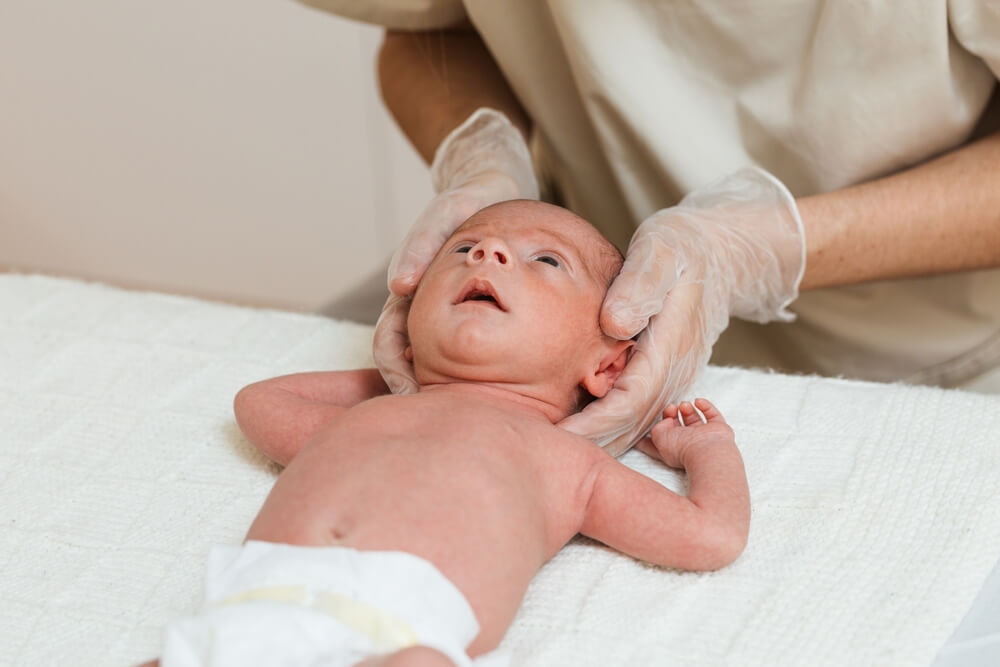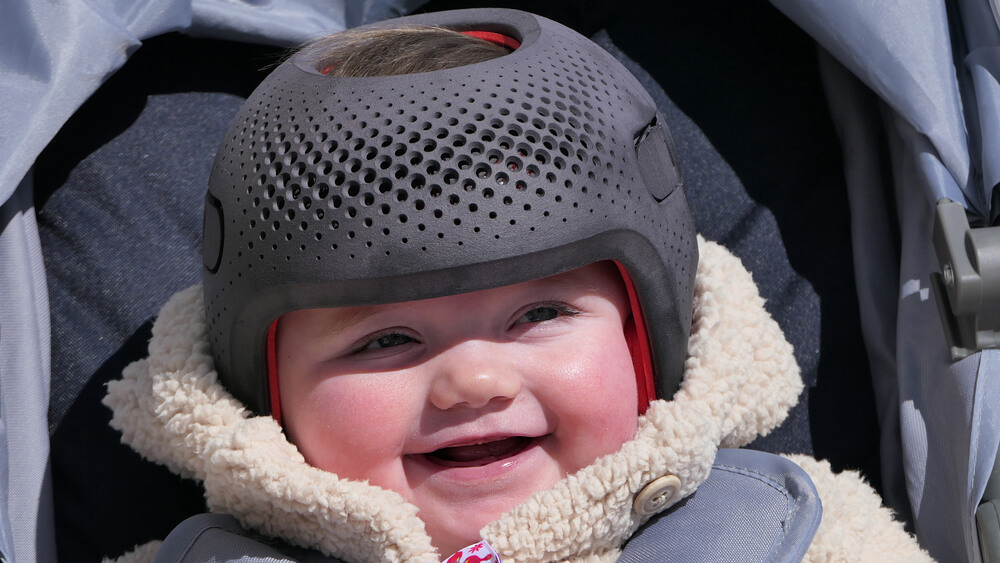What is Deformational Plagiocephaly?
Plagiocephaly can be either positional or deformational. The condition can be defined as a flat spot during infant development on either one side or the entire back area of the head. It’s either due to the baby sleeping on the side in the same position for prolonged periods or often, it’s because of neck muscle problems that lead to a sleeping preference where the baby turns his head into the same position. The term “flat head syndrome” is also often used to describe plagiocephaly. It’s also important to note that deformational plagiocephaly shouldn’t be confused with craniosynostosis. The latter describes a condition in which the infant’s skill bones manage to fuse together completely before they should. When we’re talking about plagiocephaly, the fusion in the bones of the skull still hasn’t happened yet.
If you want to learn more about these conditions or are looking for general pediatric care in Plantation and Doral, Florida, visit the expert team at Worldwide Pediatrics Group. Our experts have the necessary knowledge and experience to address both deformational and positional plagiocephaly and more.
Causes of Plagiocephaly

During sleep, the baby’s head is left in the same position for longer periods, so the skull can easily flatten. Sometimes, this flattening is present from birth because of the tightness of the uterus, and the risks may be increased with twins or more babies. Also, there are other problems that may lead to flat head syndrome, such as the following:
- Prematurity: Premature infants often have more pliable skull bones, and the situation can be exacerbated by the fact that many of them spend prolonged periods with their heads in fixed positions while in the hospital, often while on respirators.
- Muscular torticollis: This is a congenital problem present at birth. Muscular torticollis means that the neck muscles tend to be very tight, and the stiffness keeps the infant’s head in the same position.
- Sleeping on their backs: Infants who predominantly sleep on their backs without frequent changes in position may also be susceptible to developing flat head syndrome. Nevertheless, it’s important to note that the safest sleeping position for babies is on their backs, which helps reduce the risk of SIDS (Sudden Infant Death Syndrome).
On that note, babies are more likely to develop flat head syndrome if they are:
- Male
- Firs-born children in families
- Born with assistance from vacuum extractors and other medical instruments such as forceps.
Plagiocephaly Symptoms
The condition causes a flattened appearance on the baby’s head, often only on one side or on the entire back of the head. It’s not painful, and it won’t interfere with the everyday life of the baby or their abilities.
Diagnosing Deformational and Positional Plagiocephaly
To initiate the diagnostic process, the healthcare provider will begin by thoroughly examining the infant’s head from various angles. They will also palpate the child’s head, with a specific focus on assessing the suture lines. Additionally, the healthcare provider will measure the baby’s head to determine the extent of the condition’s severity.
Plagiocephaly Treatments
The most suitable approach for treating plagiocephaly will be determined by various factors, including the baby’s symptoms, overall health, and age, as well as the severity of the condition. Potential plagiocephaly treatments may involve:
- Repositioning therapy entails adjusting the baby’s sleeping position by turning their head to the opposite side.
- Participating in physical therapy to promote balanced development of neck and trunk muscles.
- Encouraging more tummy time when the infant is awake while minimizing the use of swings, bouncers, and car seats.
In cases where plagiocephaly persists beyond six months of age or is diagnosed as moderate to severe, the healthcare provider may recommend the use of a cranial orthotic helmet. These helmets typically feature a sturdy outer shell and an inner foam lining designed to guide the baby’s ongoing head growth toward the areas requiring correction. When these helmets are correctly fitted and worn, they are highly effective in addressing positional plagiocephaly. The duration of treatment will depend on the extent of flattening and the age at which treatment commences, with close monitoring by an orthopedic specialist. It’s crucial to emphasize that only healthcare professionals experienced in this treatment approach should prescribe these helmets.
Plagiocephaly Complications
As babies continue to mature and progress, they typically acquire the ability to adjust their positioning independently. This can potentially alleviate the pressure that initially contributed to the issue. However, if the flat head syndrome has resulted in significant flat spots, spontaneous improvement may not occur. This underscores the importance of timely intervention, as untreated, the child’s head may retain its uneven shape.
Preventing Deformational and Positional Plagiocephaly
Incidents of plagiocephaly have increased since experts started the “Black to Sleep” campaign to reduce SIDS deaths. And while on that end, it was successful, it increased the condition’s prevalence. Still, it’s crucial that you don’t place your infant on their belly when they go to sleep. They cannot move or roll over themselves. So, to combat flat head syndrome, you may try the following:
- Hold your baby upright, giving them enough time to be upright
- Decrease the amount of time spent in car seats, swings, and bouncers.
- Maximize tummy time with your infant.
When Should You Call an Expert?
To avoid any complications or long-term problems, if you see that the head of your baby is uneven or you have concerns regarding a flat spot on their head, reach out to their pediatrician and get your infant checked as soon as possible.
Plagiocephaly: A Summary

Essentially, plagiocephaly is characterized by a persistent flat area on the rear or side of the baby’s head. The initial approach to treating plagiocephaly should involve repositioning the baby’s head and encouraging more tummy time while reducing the use of devices like car seats and bouncers. While some babies may need to wear a cranial orthotic helmet as part of their treatment, conservative measures are often sufficient for many cases, particularly when the issue is addressed early on.
Address The Problem As Early As Possible
As mentioned above, if you see that there is a flat spot on your baby’s head or if you notice that their head is misshapen, reach out to their pediatrician as soon as possible. In most conservative plagiocephaly treatments, the parents’ attention plays a crucial role, so be ready to get involved in the treatment process.
We understand that the condition may seem scary, and it makes parents feel anxious. It’s only normal to be worried about the health of your child. In the case of flat head syndrome, there are several preventive steps you can take, and visiting an expert is always an option. If you have any questions or concerns regarding the condition, feel free to schedule an appointment with us today.



